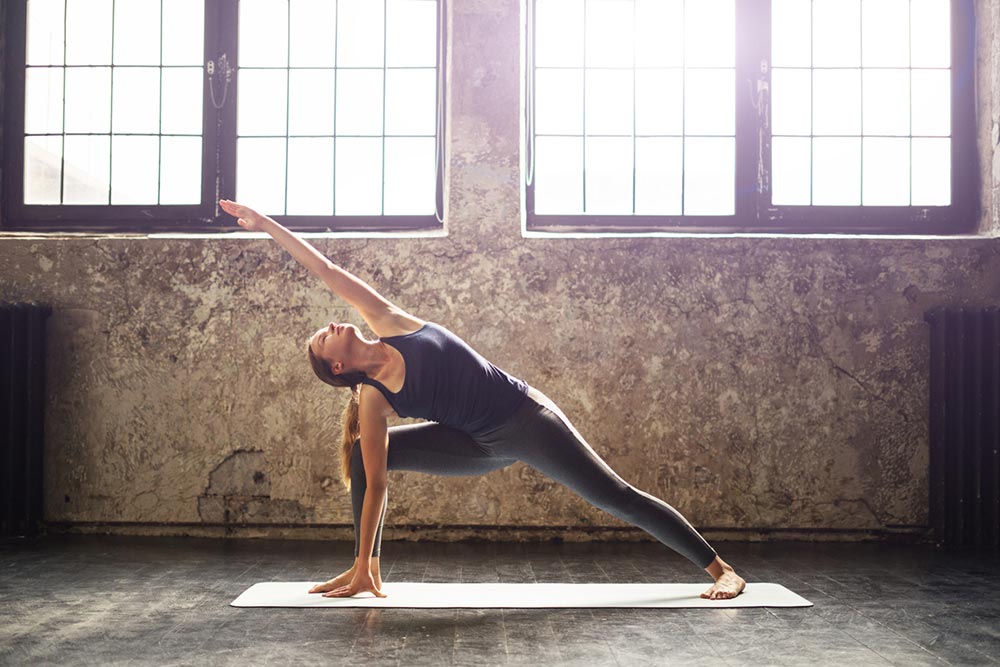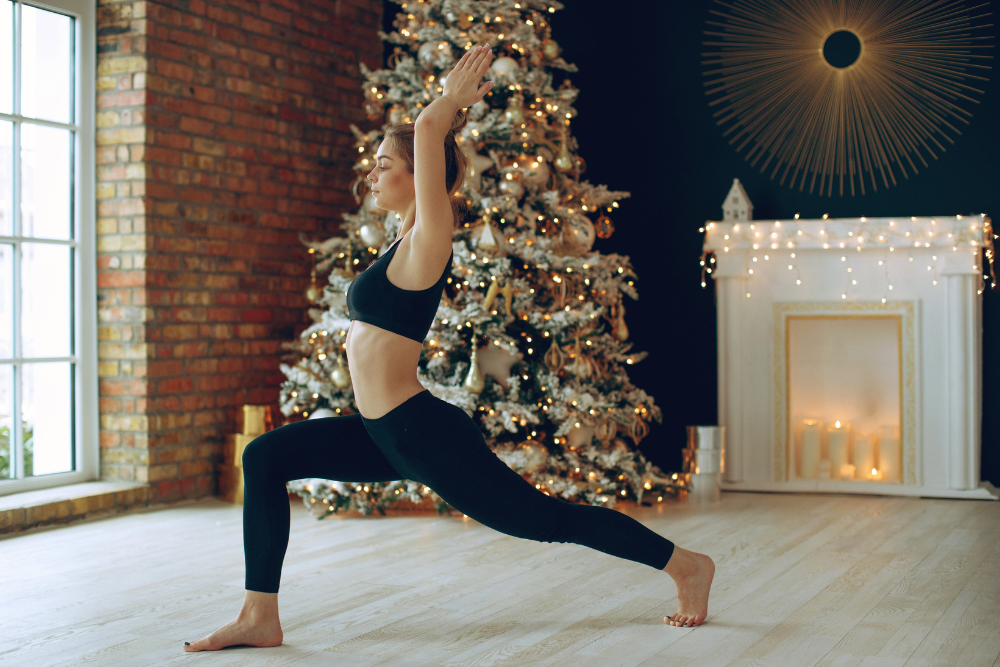3 Reasons You Should Hit The Yoga Mat

Gillian White – MSc., University of Toronto, Department of Exercise Sciences
Recently, I wrote a couple of articles about the mindfulness craze that we seem to be experiencing in our society these days. In Part II of the Mindfulness series, I gave a few ways to incorporate mindfulness into your life.
To anyone who practices mindfulness or is well-versed in health and wellness trends, there was one glaringly obvious omission from the list of Mindful To-Do’s: Yoga. Yoga and mindfulness are pretty closely linked, from their roots in mystical Eastern religious practices to their recent emergence in our collective consciousness in the West. Both have been touted as “wellness trends” or “hippie voodoo” at various times but are both well supported by scientific findings. So much so that I decided that yoga needed its own article outside of the umbrella of the Mindfulness series.
Yoga has had such an impact on our mainstream culture that entire industries have sprung up around it – studios pop up on street corners almost as often as Starbucks and a whole fashion genre of its own. But why have people embraced it so whole-heartedly and what are the real benefits of practicing regularly?
Related Article: Mindfulness – What Does That Even Mean
Stress Relief/Mindfulness
Yoga is known to be a powerful stress reliever and an excellent form of practicing mindfulness. The controlled breathing and meditation during postures is likely responsible for its stress relieving capabilities, reducing sympathetic nervous system activation (fight or flight) and increasing parasympathetic nervous system activation (restorative) (Riley 2004; Bernardi et al. 2001).
Not surprisingly, this has also been linked to observations of reduced symptoms of anxiety and depression (Pilkington et al. 2005; Woolery et al. 2004). A 2010 study by Kiecolt-Glaser et al. in Psychosomatic Medicine found that in addition to the calming effects on the nervous system’s activation, those who practiced frequently had lower inflammatory markers than people who were new to yoga. This is important not only as an indicator of the body’s level of stress but because inflammation is a predictor of all-cause mortality (i.e. dying from anything!) and a wide range of diseases from heart disease and diabetes to Alzheimer’s and dementia.
It’s no wonder that Sting still looks so young!
Best types: Yin, Hatha
Flexibility/injury prevention
The most obvious physical outcome of yoga is, of course, muscular flexibility. While this physical characteristic seems to be the most frequently overlooked by those of us who would prefer to think of ourselves as more “hard core” than the yoga image offers, flexibility is one of those unsung heroes of fitness.
As any runner can attest to, injury is a dark cloud that can follow you or pop up out of nowhere. Tendonitis is a plague, especially as you get older, and can knock you out of the training game more often than it should. Yoga not only lengthens tight muscles that can cause joints to move in ways that stress the joint/tendons, but also strengthen the muscles stabilizing joints. This means that the training effects can help you stay injury free while you pursue your “hard core” athletic endeavours (but you might just enjoy yourself while you’re on the mat too).
Best types: Any
Related Article: Improve Performance With Mobility Training
Cardio/Strength
While yoga is often considered a relatively low intensity workout and generally doesn’t pop up on any “favourite cardio workouts” lists, you can still get a good sweat at the studio, even if it isn’t hot yoga!
Some types have a higher time under tension ratio for muscles, increasing the metabolic demands of the exercise and making your heart pump harder. ‘Under tension’ is basically a fancy way of saying that your muscles are flexed and resisting force as opposed to simply stretching without flexing. And when your muscles are working, your heart has to work to support their increased energy demand.
Between the energy used by your muscles and your heart pumping – voila! You’ve got yourself a cardio workout!
Best types: Vinyasa (Flow) Yoga, Power Yoga, “Jock” Yoga
So whether you’ve been practicing for years, tried it and ditched it, or never set foot in a studio, there’s a yoga out there for you and benefits to be reaped for every type of athlete and Fast Twitch Grandma!
Namaste.
Related Article: Laughter Yoga – The Next Big Thing
References:
Bernardi L, Sleight P, Bandinelli G, Cencetti S, Fattorini L, Wdowczyc-Szulc J, Lagi A. (2001) Effect of rosary prayer and yoga mantras on autonomic cardiovascular rhythms: comparative study. Br Med J 323:1446–1449.
Kiecolt-Glaser et al. (2010) Stress, Inflammation, and Yoga Practice. Psychosom Med. 72(2): 113.
Pilkington K, Kirkwood G, Rampes H, Richardson J. (2005) Yoga for depression: The research evidence. J Affect Disord 89:13–24.
Riley D. (2004) Hatha yoga and the treatment of illness. Altern Ther Health Med 10:20–21.
Woolery A, Myers H, Sternlieb B, Zeltzer L. (2004) A yoga intervention for young adults with elevated symptoms of depression. Altern Ther Health Med 10:60–63.
You Might Like:
















